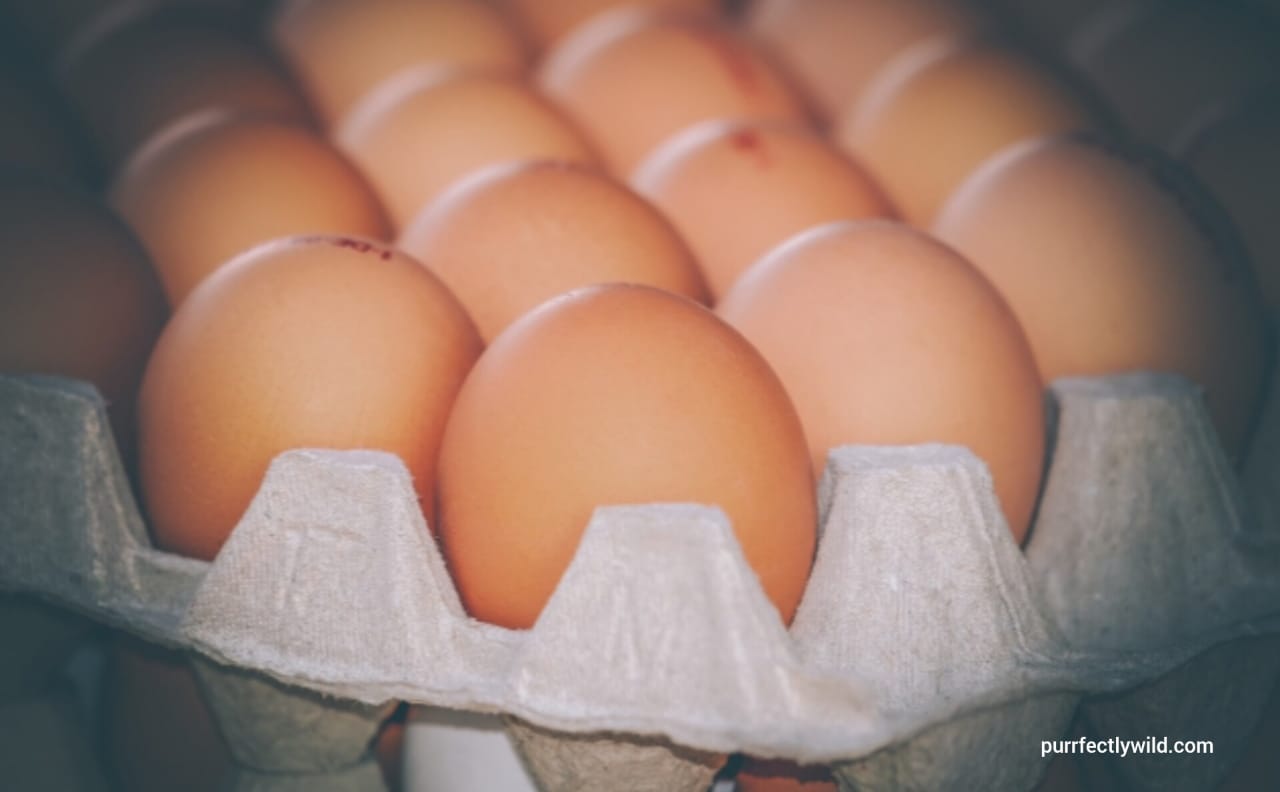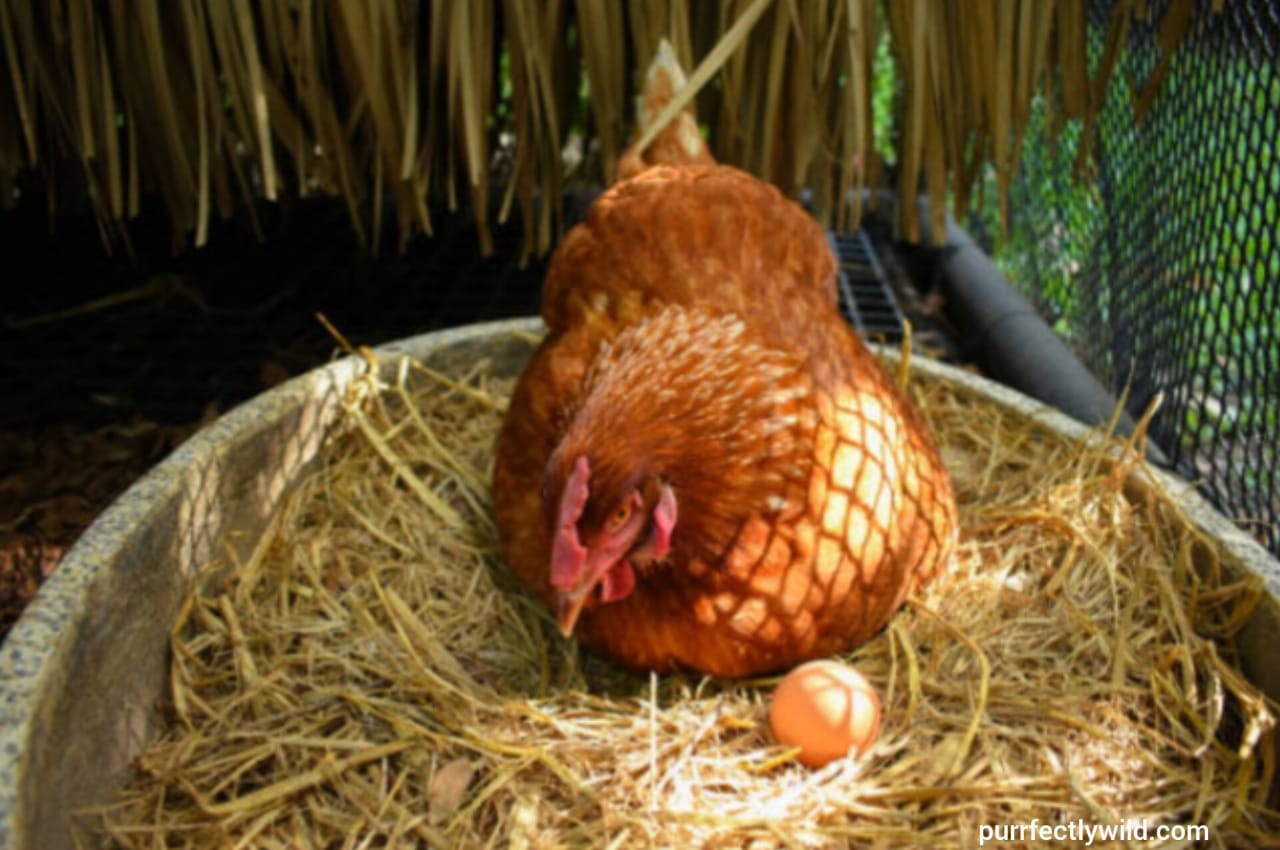Blood on Chicken Egg Shell
There are many different types, shapes, and textures of our chicken eggs. Eggs that are abnormal are not uncommon. When your hens reach the age where they can begin laying eggs, there is a good chance that they will produce some eggs with unusual appearances throughout their lifetime. In any case, when blood is involved, being ready and watch your hen is ideal.
Would it be advisable for you to stress when you track down blood on an eggshell? Let’s talk about the most common causes of the blood on the outside of your chicken eggs.

Formation of Egg
Prior to diving into the subtleties of things that can turn out badly during the egg-laying process, we really want to know how an egg is shaped inside the hen’s body. Before your chicken can lay an egg, there are a few things that take place inside.
- The ovary delivers a yolk when it arrives at the right size. This occurs daily or several times per week, depending on the breed. This interaction is called ovulation.
- When the yolk is delivered, it begins its excursion through the hens’ regenerative framework, beginning in the infundibulum.
- The following stop is the magnum. The albumen is added in this location.
- The albumen and yolk travel to the isthmus, where shell membranes are added, as soon as the albumen is added. An egg exists of two shell films, an inside and outside layer.
- The eggshell is finally formed. The shell gland is the location of this, which consumes the most time. Egg color is also produced by shell pigments in the shell gland.
- The egg continues its journey once the shell is formed. Not long prior to arriving at the cloaca, where the egg gets pushed out, the egg turns enormous end first.
Blood On The Eggshell
Presently we know how an egg structures inside a chicken’s body, we can attempt to sort out what causes smears of blood outwardly of the egg. We’ll talk about two things:
- Internal tear or injury
- The vent is not stretched enough
- Large egg
- Prolapsed vent
Internal tear or injury
A minor injury in the chickens’ vent area is a common cause of a blood smear on the eggshell. Since the egg chute is lined with blood vessels, it’s not uncommon for one to break at some point. This could be caused by a broken blood vessel. She will be fine if your chicken appears to be fine and there is no visible damage from the outside or blood around the vent area. However, check the eggs for bloody spots and keep a closer eye on your hens for the first few days.
Vent is not stretched far enough
A pullet that has just begun laying eggs may occasionally contain blood spots. As long as she seems healthy, it’s nothing to worry about. The vent region should be loosened up for the eggs to emerge without harming the egg chute.
After a few weeks, this will naturally occur, but while the egg is being pushed out, a blood vessel may burst. At the point when a pullet begins laying, it’s typical to lay strangely molded or bizarre eggs in the main week.
Large Eggs
Chickens produce a variety of eggs, including eggs with multiple yolks! Or then again more. The world record for the most yolks in an egg, as determined by Guinness World Records, is nine (9!). Eggs with more yolks are larger. Thus, huge eggs can cause a touch of harm like a torn vein or minor injury on the grounds that the vent region isn’t utilized to this egg size. Your hen will get better on her own; There is no cause for alarm.
A Prolapsed Vent
A prolapsed vent, which can result in bloody spots on eggshells, is a serious problem that typically affects younger or older hens. Your chicken must be treated as soon as possible in this life-threatening situation. Fortunately, recognizing a prolapsed vent in chickens is exceptionally simple. So you can act right away and begin treatment or take your chicken to a vet.
When an egg is laid and the tissue of the reproductive tract does not retract within the chicken’s body,
this condition is known as prolapsed vent. Bloody eggshells are a possibility because the chicken’s bare tissue is sticking out of its bum. You first need to isolate her from the group, so different chickens can’t peck the uncovered tissue. The hen should then be kept in a dark environment and fed mixed corn rather than pellets. This will slow down egg production, giving the area time to heal. If you don’t have a veterinarian who specializes in poultry, you can try to resolve the issue on your own.
On the off chance that the prolapsed vent is little in size,
meaning more modest than a ping-pong ball, the issue might determine all alone. In the event that your chicken has a messy bum, absorb her tepid water to clean the vent region and splash an antibacterial shower, as Vetericyn, to forestall diseases. Try not to attempt to eliminate dried crap from the plumes; You might hurt the tissue. The prolapsed vent should disappear after a few days. Watch out for her with the goal that the issue doesn’t deteriorate.
When there is no veterinarian available and the prolapsed vent is larger than a ping pong ball, attempt to gently push the tissue back inside. To avoid damaging any tissue, use lubricant and gloves that are protective. Hold the tissue in its place for two or three minutes so it won’t return out. Preparation H, a hemorrhoid cream, can be used to keep the tissue in place and reduce swelling.
Once she has fully recovered, introduce her to the flock again.
When Would it be advisable for you to Stress?
The majority of reasons for eggshells covered in blood are fairly innocuous. There is no immediate cause for concern unless you notice that your chicken has a vent that is protruding, which can be easily identified. Blood, on the other hand, is synonymous with injury. Therefore, pay extra attention whenever you notice one of the following problems:
- Torpid chicken
- Blood in chicken crap
- Incessant ridiculous eggshells
- Exposed bottom or grimy bottom
Continuously counsel a veterinarian in the event that you don’t know of the ongoing circumstance of your chicken.
Let’s summarize:
Young hens frequently develop bloody eggshells, which are not always a major problem. A minor injury inside the egg chute or a rupture in a blood vessel are the primary sources of the blood. Assuming your chicken appears to be content and solid, watch out for her, yet she’ll be alright.
The presence of blood on the eggshell may be caused by a protruding vent. The bare tissue sticking out of the chicken’s bum makes it clear what it is. The immediate resolution of this life-threatening circumstance is required. Close to these issues, watch out for horrendous chicken crap, filthy vent regions, lazy chickens, or on the other hand assuming your hen every now and again lays ridiculous eggs.


